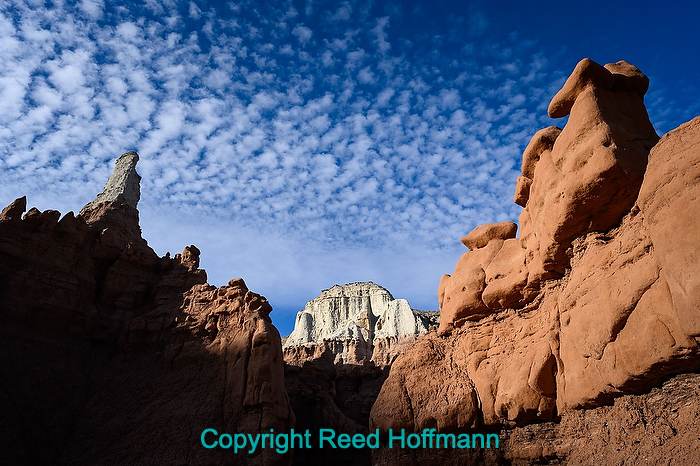The American Southwest has some of the most unique landscapes to be found in our country, which explains why it’s such a draw for photographers. Combine that with dark nights, good weather and easy access in the off-season, and you’ll understand why I’ve just finished my fourth photography workshop there in as many years.
In 2016 I was one of the instructors on a larger workshop that visited five national parks in Arizona and Utah in five days. That was fun, but it was the last two that made the biggest impression on me, Canyonlands and Arches. Each is unique and different, and both are easily accessed from Moab. Moab has lots of choices in hotels and restaurants, and is less than four hours from a major U.S. airport, in Salt Lake City. Bingo. I knew after that trip I’d return and focus my efforts on those last two parks, working out of Moab. And that’s just what I’ve done the last three years, taking six clients there for four full days of photography.
Here are a few of the locations we visited and photos we made, with some stories about those shoots. I’ll return again in November of 2020, so if you’re interested in joining me, let me know.
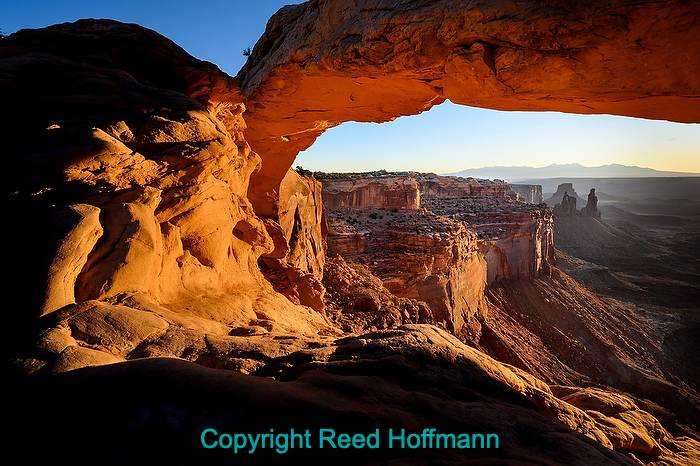
We visit several iconic locations in the area, but for sunrise, none beats Mesa Arch in Canyonlands National Park. It’s our only truly early morning, leaving well before sunrise to make the drive and then hike in before the sun breaks the horizon. Most people want to shoot the sunburst through the arch right at sunrise, but I prefer this angle, about thirty minutes later. Nikon Z 7, Aperture Priority, Sunny white balance, ISO 100, 1/30 at f/18 in Matrix metering, -0.7 EV, Nikkor AF Zoom 14-30mm f/4 lens at 16mm.
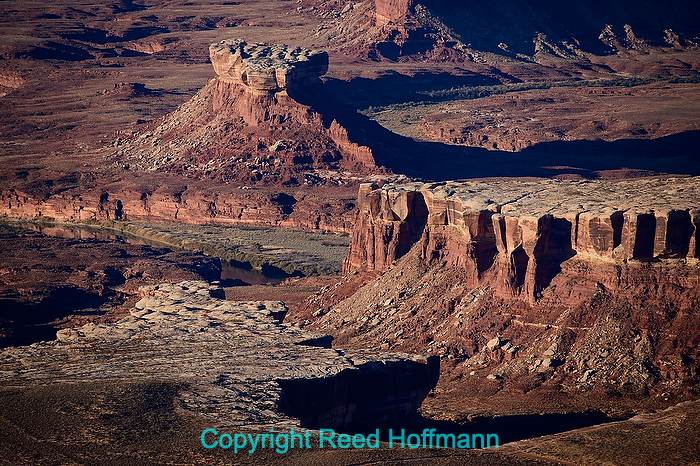
after Mesa Arch, we head over to Green River Overlook to catch the early morning light over the valley floor. To me, Canyonlands is all about being up top, with views down and in, so a telephoto lens comes in handy for that. Nikon Z 7, Aperture Priority, Sunny white balance, ISO 100, 1/400 at f/8 in Matrix metering, -1.0 EV, Nikkor VR Zoom 70-300mm f/4.5-5.6 lens at 270mm.
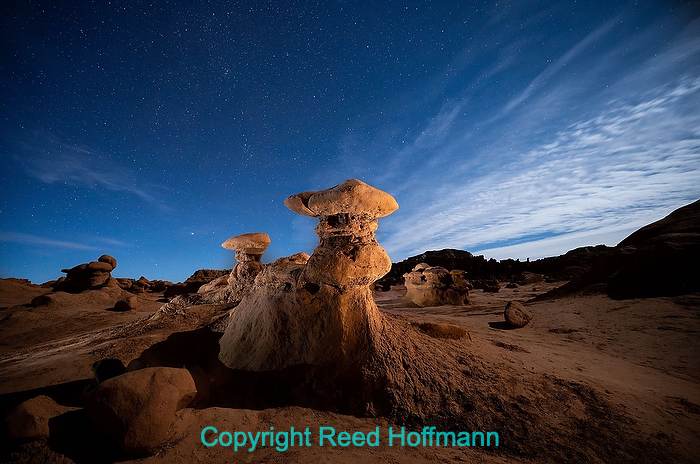
Two years ago I discovered Goblin Valley State Park, and it’s been on my itinerary ever since. We spend late afternoon wandering among the rock formations, then after sunset I bring out my Lume Cubes and teach everyone how to do low level lighting. I used three for this photo. Nikon Z 6, Manual exposure, Sunny white balance, ISO 1000, 20-seconds at f/4 in Matrix metering, -1.0 EV, Nikkor AF Zoom 14-30mm f/4 lens at 14mm.
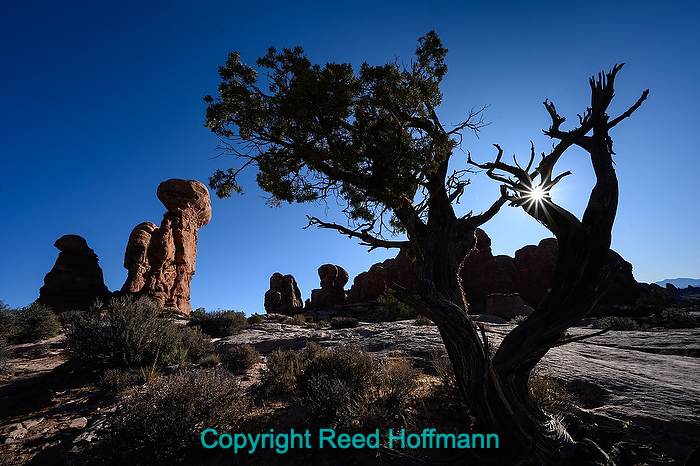
There are plenty of famous locations to visit in Arches, but I’ve also found some of the less-famous ones to be great for pictures at the right time of day. This is near The Garden of Eden. I’m using a small aperture, and partially blocking the sun with my framing, to get this nice starburst. Nikon Z 7, Aperture Priority, Sunny white balance, ISO 80, 1/100 at f/16 in Matrix metering, -1.0 EV, Nikkor AF Zoom 14-30mm f/4 lens at 14mm.

It’s always possible to find some rock climbers in Arches. Our group saw this pair, spent a while photographing them, and as we worked to put the sun behind them, just got lucky with the jet. Nikon Z 7, Aperture Priority, Sunny white balance, ISO 200, 1/4000 at f/16 in Matrix metering, -3.3 EV, Nikkor VR Zoom 70-300mm f/4.5-5.6 lens at 135mm.
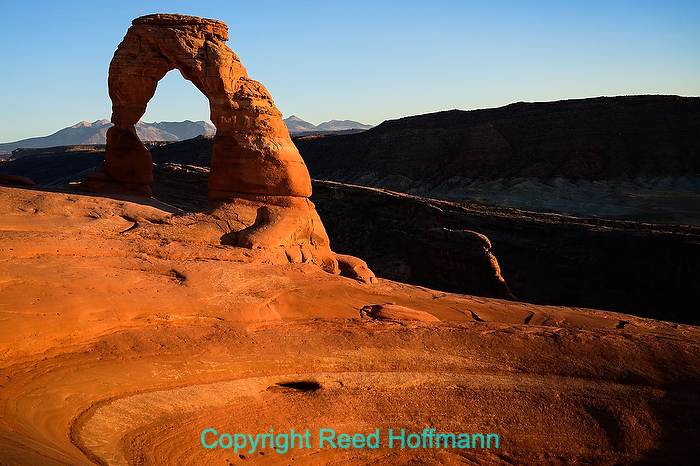
In summer, Delicate Arch is a mob scene, and with temps over 100-degrees a pretty miserable hike. In November it’s not bad at all, either for temperatures or people. Note there’s not even anyone near the arch? Nikon Z 7, Aperture Priority, Sunny white balance, ISO 100, 1/100 at f/7.1 in Matrix metering, -0.3 EV, Nikkor AF Zoom 24-70mm f/4 lens at 34.5mm.
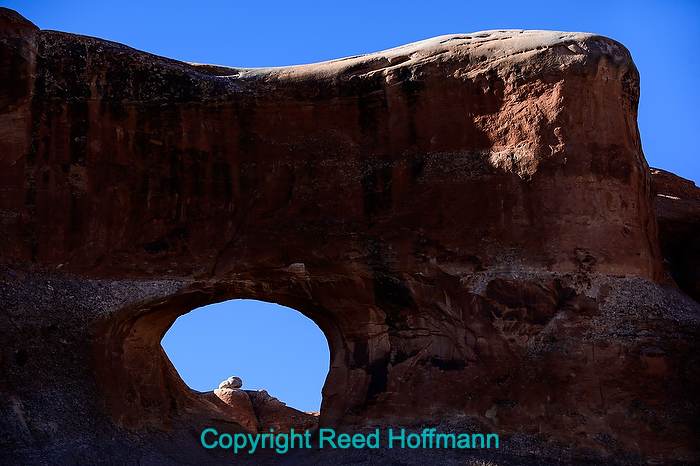
I make sure to set aside a couple of hours to spend at Devil’s Garden, which has a great variety of features to work with. Tunnel Arch is tucked into a wall there, and if you don’t know where to look, you’d completely miss it. I love how it frames that white boulder. Nikon Z 7, Aperture Priority, Sunny white balance, ISO 100, 1/500 at f/5.6 in Matrix metering, -1.7 EV, Nikkor VR Zoom 70-300mm f/4.5-5.6 lens at 102mm.
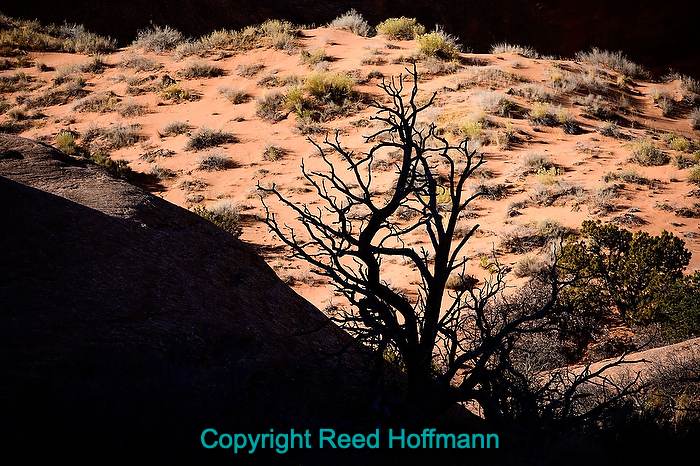
Both of these parks are great places to work with light and shadow, and being almost guaranteed good weather, it’s pretty easy to find scenes like this. Nikon Z 7, Aperture Priority, Sunny white balance, ISO 100, 1/640 at f/5.3 in Matrix metering, -0.7 EV, Nikkor VR Zoom 70-300mm f/4.5-5.6 lens at 180mm.
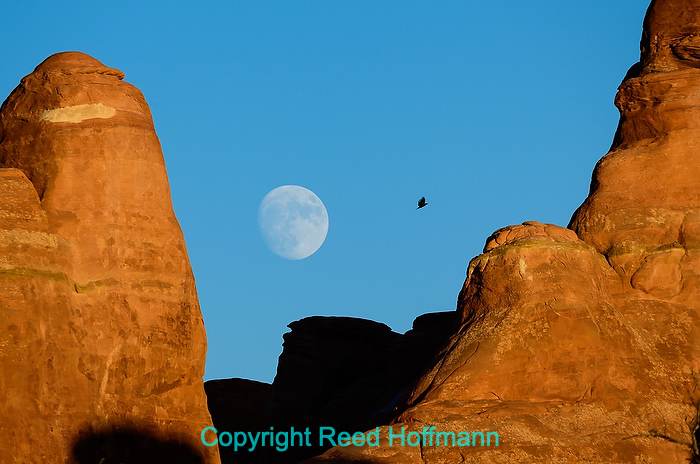
Our last day there, the moon was going to be nearly full, and rising just before sunset. So I found us a place between Fiery Furnace and Devil’s Garden where we could photograph it rising between the fins of rock. I didn’t plan on the raven, but will take credit anyway! Nikon Z 7, Aperture Priority, Sunny white balance, ISO 100, 1/250 at f/8 in Matrix metering, -0.3 EV, Nikkor VR Zoom 70-300mm f/4.5-5.6 lens at 300mm.

One thing I really like about this workshop is that I schedule night shoots for all four days. On our last night, I found this area where we were able to make three different photos in a period of about ninety minutes. This was the first, with a bit glow from sunset in the sky still, and then I used two Lume Cubes to light the tree and background. Nikon Z 6, Manual exposure, Sunny white balance, ISO 400, 20-seconds at f/5 in Matrix metering, +1.3 EV, Nikkor AF Zoom 14-30mm f/4 lens at 22.5mm.
(If you like this story, please share it with your friends and let them know about the links on photography that I post on my business Facebook page. I’m also on Instagram and Twitter, @reedhoffmann. And if you’re curious about the workshops I teach, you can find them here.)

